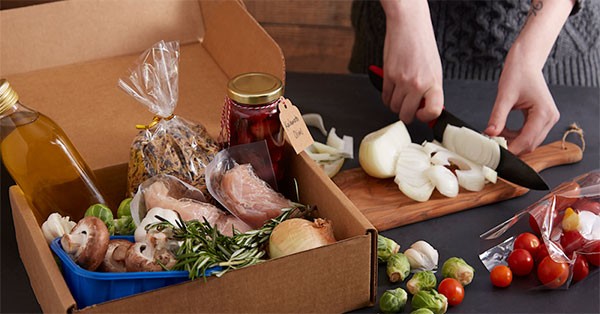Meal kits have quickly grown in consumer awareness and usage, with the arrival of Blue Apron in 2012 marking the first U.S. meal kit company. For roughly $60 per week, consumers receive three two-serving meals of their choice with easy step-by-step recipes at their doorstep.
In a few years, the market has blossomed into a full-on industry that is threatening grocery stores and restaurants. According to Packaged Facts, there are now more than one hundred meal kit delivery services available, and they take different forms to appeal to each type of consumer. These kits range from fully prepared, ready to heat meals to ingredients and recipes for specialized diets (e.g., paleo, Whole 30, certified organic, vegan, etc.).
While meal kits were a $1 billion industry in 2015, revenues are expected to grow to $10 billion by 2020, according to Statista, with growth upward of 150% year over year.
In June, we hosted a strategy session in Chicago and attendees were able to discuss the category with leading operator, Home Chef.
Home Chef is a 5 year old meal kit company, headquartered in Chicago. They are the third largest company in the space, behind Hello Fresh and Blue Apron. Their meals reach 100,000 households weekly. Home Chef’s meal focus is “familiar with a twist”, noting that an unexpected flavor in a familiar format is often how they achieve this. For example, a burger that has the flavors of a plate of nachos, with jalapeno cheese sauce and crispy tortilla strip toppings. They offer 18 meal options each week through their e-commerce platform, and rarely repeat a meal within a quarter.

Most assume that Millennials are the typical meal kit customer, but that is not the case for Home Chef. In fact, their typical customers are married with children, but those children have left the home. Meal reviews and ratings are used to inform the Home Chef team about successful meals, concepts and flavor profiles.
Recently, Home Chef began offering protein swap options on their e-commerce platform. While this does complicate operations at their three distribution facilities, it allows customization and flexibility that consumers desire. Most packing at the facilities is done manually, with a few automated portioning machines, which enables Home Chef to offer different proteins for meals without having to adjust automated packing lines. Another new addition to Home Chef’s meal options are Oven Ready meals, or fully prepared meals ready to combine and cook.
Depending on the product category, manufacturers’ retail or foodservice team may engage with the meal kit company. Portion or pack size requirements of certain products also contribute to the decision for retail or foodservice preferences.
Meal kit companies are still growing. New formats and increased variety are one driver of growth that come with operational challenges, but offer increased opportunity for food manufacturers. As meal kit companies continue to explore and develop the category, manufacturers can play an integral role in product innovation with offerings that span formats, pack/portion sizes and flavors. Relationships with retailers are also important for manufacturers, as consumer meal kit trial is often occurring from in-store purchases. This hybrid segment continues to evolve and manufacturers that stay tuned in to the changing needs will have a significant advantage in successful partnerships.

Recent Comments